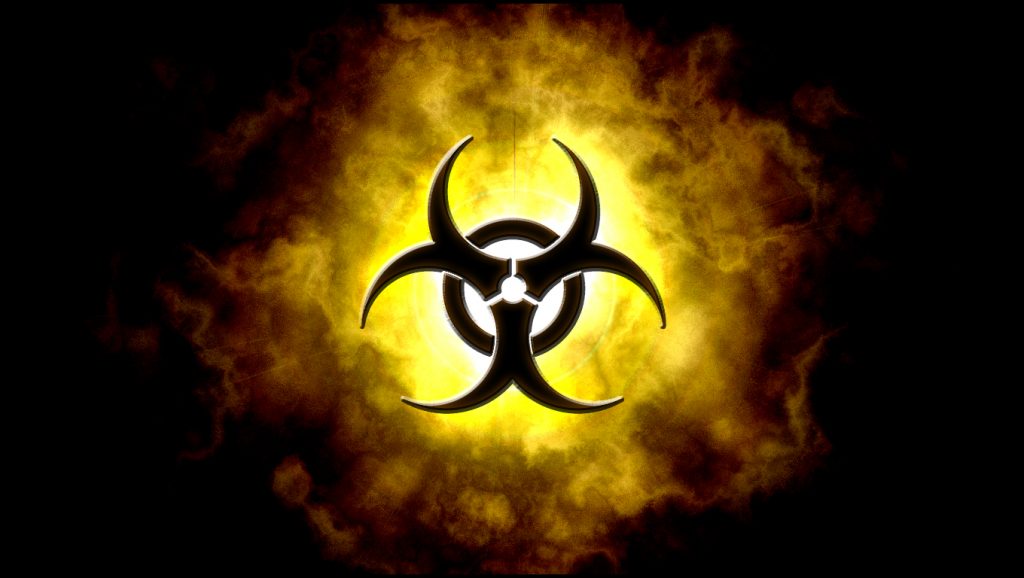
Biodefense and Bioterrorism
😈💩👎
For You
Summary
A bioterrorism attack is the deliberate release of viruses, bacteria, or other germs to cause illness or death. These germs are often found in nature. But they can sometimes be made more harmful by increasing their ability to cause disease, spread, or resist medical treatment.
Biological agents spread through the air, water, or in food. Some can also spread from person to person. They can be very hard to detect. They don't cause illness for several hours or days. Scientists worry that anthrax, botulism, Ebola and other hemorrhagic fever viruses, plague, or smallpox could be used as biological agents.
Biodefense uses medical measures to protect people against bioterrorism. This includes medicines and vaccinations. It also includes medical research and preparations to defend against bioterrorist attacks.
Multiple viral agents have been classified by the CDC as potential weapons of mass destruction or agents for biological terrorism. Agents such as smallpox, viral hemorrhagic fever viruses, agents of viral encephalitis, and others are of concern because they are highly infectious and relatively easy to produce. Although dispersion might be difficult, the risk is magnified by the fact that large populations are susceptible to these agents and only limited treatment and vaccination strategies exist. Although the risk of large-scale bioterrorism using viral agents is small, public health programs and health care providers must be prepared for this potentially devastating impact on public health.
Centers for Disease Control and Prevention
Bioterrorism (American Academy of Family Physicians)Also in Spanish
Bioterrorism Agents/Diseases (Centers for Disease Control and Prevention)
In the Event of Bioterrorism: Protecting Families from Deadly Diseases (American Academy of Pediatrics)Also in Spanish
Mass Psychogenic Illness (American Academy of Family Physicians)
Respirator Fact Sheet (National Institute for Occupational Safety and Health)Also in Spanish
Strategic National Stockpile (SNS) (Department of Health and Human Services)
Specifics
Abrin (Centers for Disease Control and Prevention)
Arsine (Centers for Disease Control and Prevention)
Chlorine (Centers for Disease Control and Prevention)
Cyanide (Centers for Disease Control and Prevention)
Key Facts about Tularemia (Centers for Disease Control and Prevention)
Lewisite (Centers for Disease Control and Prevention)
Nitrogen Mustards (Centers for Disease Control and Prevention)
Phosgene (Centers for Disease Control and Prevention)
Ricin (Centers for Disease Control and Prevention)
Riot Control Agents (Centers for Disease Control and Prevention)
Sarin (Centers for Disease Control and Prevention)
Sodium Azide (Centers for Disease Control and Prevention)
Soman (Centers for Disease Control and Prevention)
Strychnine (Centers for Disease Control and Prevention)
Sulfur Mustard (Centers for Disease Control and Prevention)
Tabun (Centers for Disease Control and Prevention)
VX (Centers for Disease Control and Prevention)
Journal ArticlesReferences and abstracts from MEDLINE/PubMed (National Library of Medicine)
Bioterrorism Agents/Diseases
A
B
C
Chlamydia psittaci (psittacosis)
Clostridium perfringens (Epsilon toxin)
E
Emerging infectious diseases such as Nipah virus and hantavirus
Epsilon toxin of Clostridium perfringens
F
G
L
M
P
Psittacosis (Chlamydia psittaci)
Q
R
Rickettsia prowazekii (typhus fever)
S
Staphylococcal enterotoxin B
T
Typhus fever (Rickettsia prowazekii)
V
Viral encephalitis (alphaviruses [e.g., Venezuelan equine encephalitis, eastern equine encephalitis, western equine encephalitis])
W
Water safety threats (e.g., Vibrio cholerae, Cryptosporidium parvum)
Y


